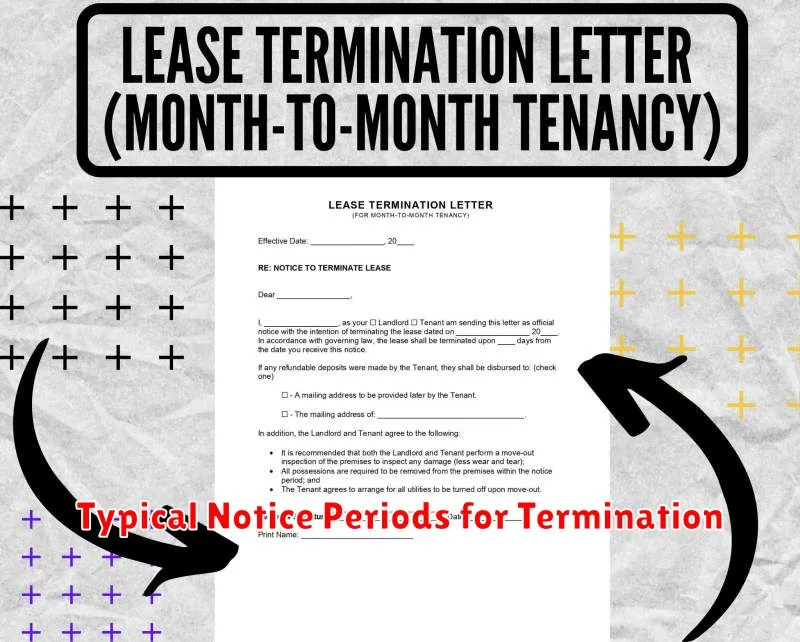Considering a month-to-month lease? A month-to-month lease agreement offers flexibility, making it an attractive option for renters unsure about long-term commitments. However, understanding the nuances of a month-to-month tenancy is crucial before you sign. This article will explore essential aspects of month-to-month leases, covering topics like notice requirements, rent increases, and the advantages and disadvantages compared to a fixed-term lease. Whether you’re a landlord or a tenant, knowing your rights and responsibilities under a month-to-month rental agreement is paramount.
From understanding how month-to-month rent works to navigating the termination process, this guide will equip you with the necessary information to make informed decisions. We’ll delve into the pros and cons of month-to-month leases, helping you weigh the benefits of flexibility against potential drawbacks. By the end of this article, you’ll have a comprehensive understanding of month-to-month lease agreements and be prepared to confidently enter into or offer this type of rental agreement.
What Is a Month-to-Month Lease?
A month-to-month lease, also known as a tenancy-at-will, is a short-term rental agreement that renews automatically each month. Unlike a fixed-term lease (e.g., a one-year lease), a month-to-month lease doesn’t have a predetermined end date. It continues indefinitely until either the landlord or the tenant provides proper notice of termination.
This type of lease offers flexibility for both parties. It allows tenants to move with relatively short notice, which is beneficial for those who value mobility. Landlords also benefit from the ability to adjust rent prices more frequently or reclaim the property with proper notice.
How It Differs from Long-Term Leases
Month-to-month leases differ significantly from long-term leases, primarily in duration and flexibility. Long-term leases typically lock you in for a fixed period, often a year or more, providing stability and predictable rent payments. Conversely, month-to-month agreements renew automatically each month, offering greater freedom to terminate the lease with relatively short notice.
Another key difference lies in rent adjustments. Long-term leases generally maintain a consistent rent throughout the lease term. With month-to-month arrangements, landlords have the option to increase the rent more frequently, usually with a 30- or 60-day notice. This can lead to less predictable housing costs.
Pros of Month-to-Month Rentals
Month-to-month leases offer significant flexibility. This type of agreement allows tenants to easily relocate without being bound by a long-term contract. This is particularly advantageous for individuals experiencing a period of transition, such as a job change or relocation.
Another benefit is the predictable short-term cost. While monthly rent may sometimes be slightly higher than in a longer lease, knowing the commitment is only for one month at a time can be valuable for budgeting and financial planning.
Avoiding lease-breaking fees is another compelling advantage. Since the agreement renews monthly, tenants are not penalized if they decide to vacate after providing proper notice, typically 30 days.
Cons You Should Consider
While month-to-month leases offer flexibility, they also come with potential drawbacks. Rent increases are a common concern. Your landlord has the right to raise the rent with proper notice, typically 30 days. This can make budgeting difficult as you can’t be certain of your housing costs in the long term.
Lack of stability is another factor. Your landlord can decide to terminate the lease with proper notice, leaving you to search for new housing relatively quickly. This can be disruptive, especially if you have established roots in the area.
Amenities or lease terms may also be less favorable than with a longer-term lease. Landlords may offer fewer incentives or amenities for shorter-term agreements.
Typical Notice Periods for Termination

Month-to-month leases offer increased flexibility, typically requiring shorter notice periods than fixed-term leases. Notice periods are the length of time you or your landlord must provide written notification before ending the tenancy.
While state laws vary, a common notice requirement is 30 days. Some jurisdictions may allow for shorter periods, such as 20 days or even 15 days, particularly if agreed upon in the lease. It’s crucial to carefully review your lease agreement for the specific notice period required to avoid potential penalties.
Always provide written notice, even if your landlord accepts verbal notification. This documented communication serves as proof of your intent to vacate and helps protect you from future disputes.
Flexibility for Both Parties
A month-to-month lease offers significant flexibility compared to a traditional fixed-term lease. This benefits both landlords and tenants.
For tenants, it provides the freedom to move with relatively short notice, typically 30 days. This is ideal for individuals with uncertain housing needs or those anticipating relocation.
Landlords also gain flexibility. They have the option to adjust rent prices more frequently, potentially capturing market increases. Furthermore, they face a less arduous process to regain possession of the property if needed.
Cost Comparison to Annual Leases
A key consideration when contemplating a month-to-month lease is the potential cost difference compared to a standard annual lease. Generally, month-to-month agreements come at a premium. Landlords often charge higher monthly rent for the flexibility offered to the tenant.
This higher cost reflects the landlord’s increased risk of vacancy and the administrative overhead associated with potentially more frequent tenant turnover. While the short-term commitment of a month-to-month lease is attractive, it’s crucial to factor in this potential cost increase and weigh it against the value of the flexibility provided.
When It Makes the Most Sense
A month-to-month lease offers flexibility, making it ideal for individuals experiencing periods of transition. If you anticipate a potential move for work, education, or family reasons in the near future, a shorter-term lease can prevent being locked into a long-term commitment.
It also serves as a good option when testing out a new neighborhood or living situation before committing to a longer lease. This arrangement allows you to experience the area and determine if it’s the right fit without a year-long obligation.
Additionally, month-to-month leases can be beneficial during periods of financial uncertainty. If your job security or income is unpredictable, a short-term agreement provides greater financial control and minimizes risk.
Negotiating Favorable Terms
While month-to-month leases offer flexibility, it’s still crucial to negotiate favorable terms. Don’t hesitate to discuss points you’d like adjusted with the landlord.
Rent: Inquire about potential rent reductions, particularly if you’re willing to commit to a longer minimum stay (e.g., six months instead of one).
Notice Period: Standard notice is often 30 days, but negotiating a longer period can be advantageous for both parties. A 60-day notice gives you more time to find a new place and the landlord more time to find a new tenant.
Utilities: Clarify which utilities you are responsible for and if there are any caps or shared cost arrangements.
Document Everything in Writing

A month-to-month lease offers flexibility, but it’s crucial to document all agreements with your landlord. This protects both parties and prevents misunderstandings. Written documentation provides a clear record of the terms, preventing disputes later on.
Key items to document include the agreed-upon rent amount, the due date, and any accepted payment methods. Also, record the terms for providing notice of termination, including the required notice period.
Additionally, document the condition of the property upon move-in. Note any existing damage or defects to avoid liability later. Finally, any verbal agreements made with your landlord should be confirmed and documented in writing.

